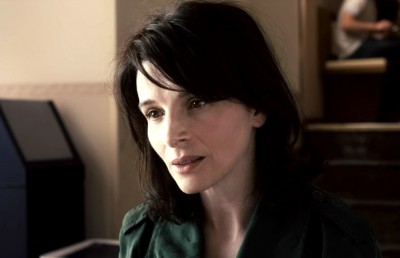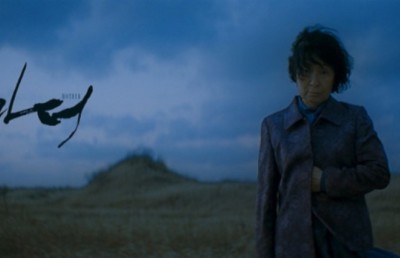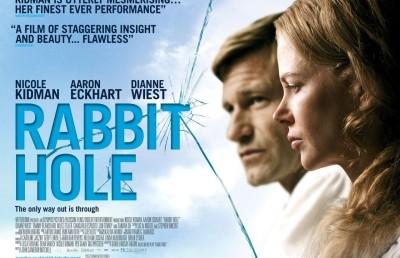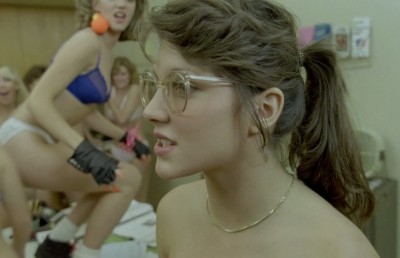Joy
Severin Films DVD Review
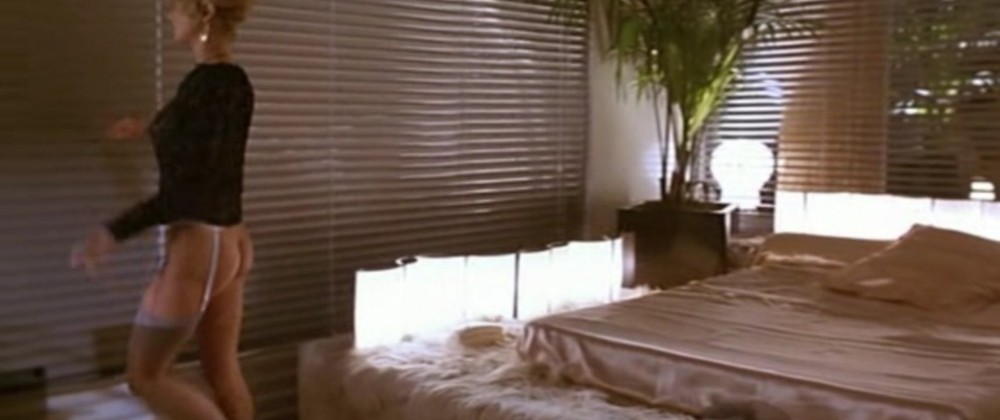
Joy
Severin DVD 2010 Release of a 1983 production
Directed By: Serge Bergon
Associate Producers: Robert Lantos and Stephen J. Roth
With: Claudia Udy and Gérard Antoine Huart, Agnès Torrent, Elisabeth Mortensen, Claire Nadeau, Danielle Godet, Michel Caron, Jeffrey Kime and Manuel Gélin
Dolby 2.0 French with optional English subtitles
Anamorphic Widescreen 1.85/16×9
Not Rated, 110 Mins.
Special Feature: Reflections of Joy-Interview with star Claudia Udy
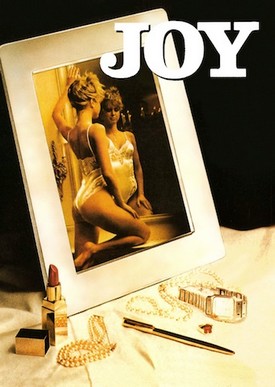
JOY begins as if it were a horror film; a young girl wakes up from a dream where a tiger is menacing her (through cross-cuts, with tiger/girl never in the same frame). The camera pulls back from her bed, the girl rubbing her eyes. Blue drapes are partially spread over a window in the background. The shot is Kubrickian in its symmetrical set design.
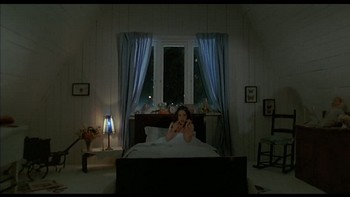
Cut to girl running (in slow motion) in a darkened hallway; a shot lit in brownish reds resembling Dario Argento’s Suspiria and Inferno.
Cut to her leaning on a banister catching her breath.
Cut to her descending stairs and walking to an adjoining room; again, Argento’s influence is unmistakable here.
Cut to a subjective shot: slow camera movement forward towards a fire place, where a naked couple make love in front of the hearth.
Cut to the child’s reaction shot of surprise and curiosity.
Cut to a close-up of the couple kissing.
Cut to the woman’s hand stroking the man’s back.
Cut to a close-up of the child wiping an eye.
Cut to the couple having intercourse.
Cut to a close-up of the woman in ecstasy.
Cut to a zoom-in to the child’s seemingly frightened face.
Cut to the man having an orgasm, in a kneeling position as he holds the woman’s pelvis in the air; he turns towards the camera (child).
Cut to a close-up of child.
Cut to a slower zoom-in towards the man’s face realizing he is being watched.
Cut to a medium shot of the child watching and slowly backing away.
Cut to the man distracted by a log that falls onto the floor from the fireplace in the background. He picks it up with metal tongs and throws it back into the fire.
He turns towards the camera again; cut to a shot showing the room empty of the little child who, we are to believe, has just left.
Cut to an exterior shot of the house with the little girl walking away in the snow, dressed in what seems to be a nun’s outfit without the head-dress, with church bells ringing on the soundtrack.
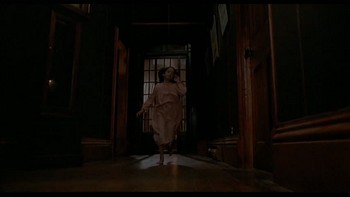
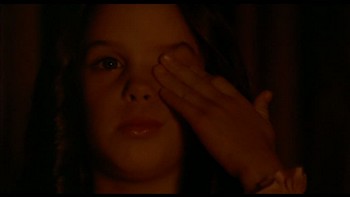
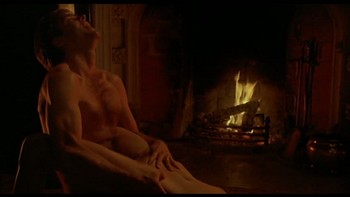
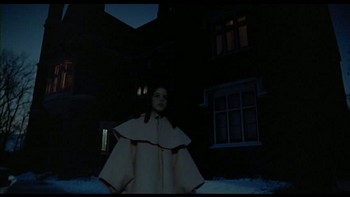
It is a very evocative and lyrical beginning which seems almost an anomaly within the film, as if it were a director show reel for prospective future employers. The film’s cinematographer is local Quebec talent René Verzier, who has lensed many cult films, including David Cronenberg’s Rabid (1977) and Denis Héroux’s Valerie (1969). There is another possible Kubrick reference to the one cited above; an outing that Joy and Marc make to an underground bar is very similar in setting and lighting to the ‘gold room’ sequence between Jack Nicholson and Joe Turkel in The Shining. The bar is lit from below, with the lighting giving the bartender a ghostly presence.
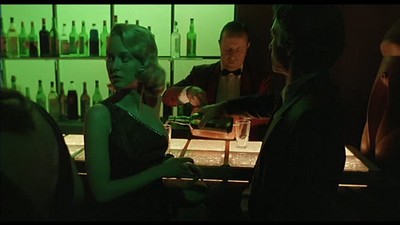
The Shining allusion
In other respects the film is shot (as were most of the Emmanuelle films of the same period) like a travelogue including quite a few scenes shot in Montreal (a few of the locations shown are the CINEMA V interior lobby and producer Robert Lantos’ own Old Montreal office).
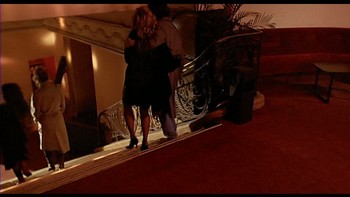
The long defunct Cinema V Theatre
The story follows the sexual and erotic exploits of Joy, a young fashion model. She has a musician boyfriend, but has dalliances with an older man she meets at a modern art museum, Marc; she is impressed with his interpretation of a painting. The gentleman takes her home, and makes “passionate” love to her, as only older art appreciators seem able to do in films such as these; Joy falls under his spell and has a complicated affair with this man.
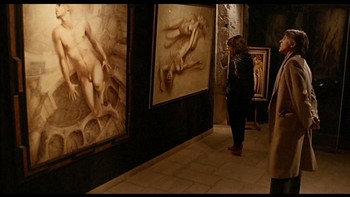
There are various hints along the way that Joy is the little girl from the opening montage, and that she may have been abused in her early teens (echoing the classic late 1970s, early 1980s slasher film prologue, i.e. Halloween, 1978). There is a short flashback sequence while Joy visits her mother and stepfather that show her being touched and fondled by the stepfather. There is a possibility that her older lover, Marc (the art critic), may be her real father whom she doesn’t remember; when asking her mother about him, the mother tells her to “forget all that”.
After breaking up with Marc, Joy moves into a friend’s home that is furnished with odd pieces of art such as a dummy dressed up as a paratrooper hanging from the ceiling, and a stuffed tiger. Once Joy sees the tiger, it triggers a dream that takes her back to the house from the beginning of the film. She walks through its abandoned corridors mirroring a similar scene in Dario Argento’s Inferno. Awoken by a phone call telling her that her real father is waiting to meet her in New York, Joy goes to the airport and the film ends with the possibility that this will be her final journey of discovery.
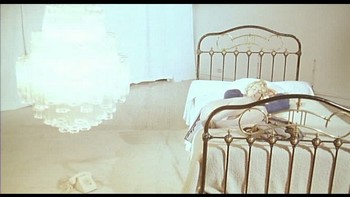
Made in 1983, the film has all of the poorly dated elements of that period immortalized on screen for us to enjoy (again!). Hedonistic loft parties; Camberwell carrots being passed around; endless mountain range heaps of Cocaine; awful 1980’s fashion (clothes, ridiculous new-wave haircuts); Mix in some Michael Jackson Thriller sound-alike music and presto, you feel time-warped back to the 1980s! As an anomaly for erotic films of this era is the progressive image of Joy plastered on Parisian posters declaring “The rights of all women, “the Orgasm”; and the soundtrack piece by Brian Eno and Jon Hassell during an orgy sequence which sticks out as atypical ‘shagging’ music.
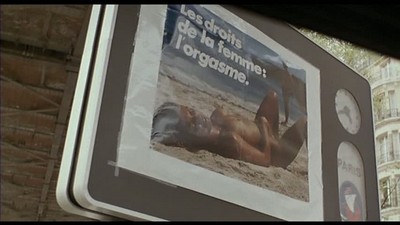
The film is very well represented with this transfer considering its limited cultish audience. There are a very few instances of artifacts in the darker scenes and also in some of the very bright white backgrounds, but these are few. Severin have done a great job again with another (what can only be described as..) odd title from the erotic frolicking 70’s/80’s canon of Emmanuelle clones. As a special feature, we are treated to a 20 minute interview with Joy herself, Claudia Udy, who seems really pleased about having made the film, and relates various stories about its production. Most interesting to the Montreal audience would have to be the anecdote of her dad reading the script and giving her his blessing to do the project; he was a professor at Concordia University no less!
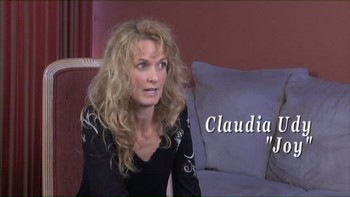
Definitely a recommendation for anyone who has a penchant for the soft-core weirdness of 1970’s cinema, which very often would outdo its X-rated brethren in subject matter and creative execution.



